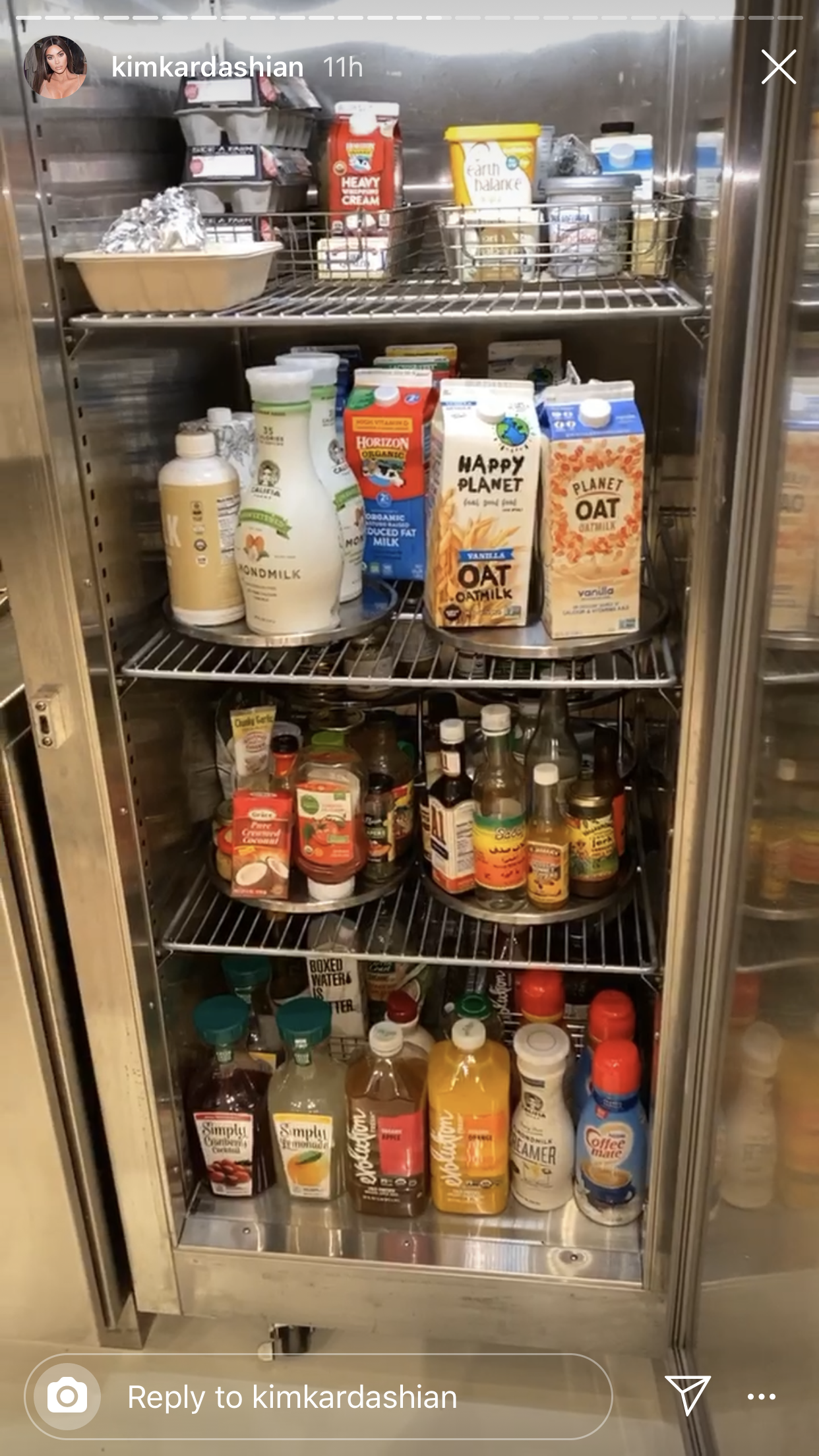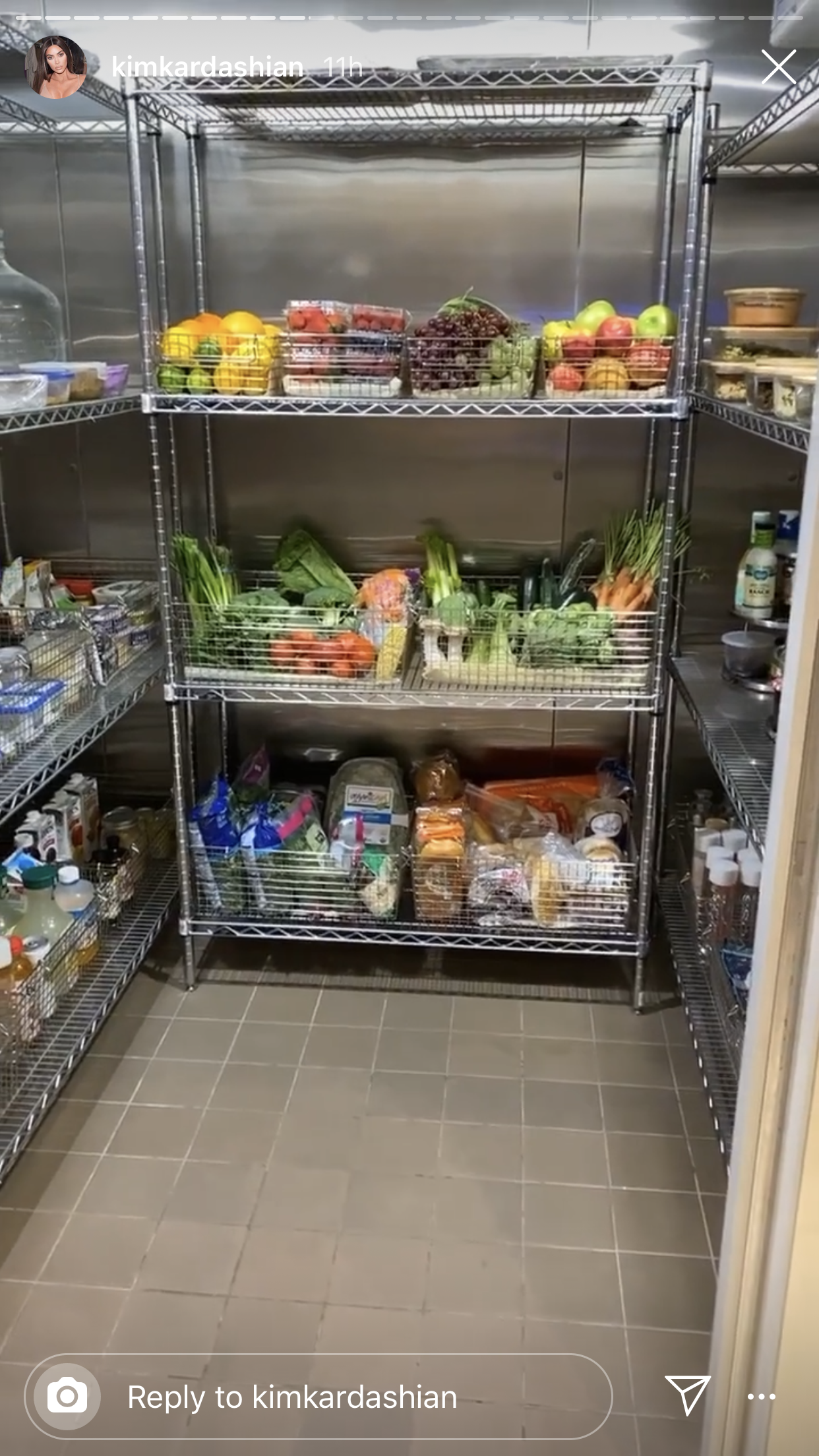Selected cultural history of the celebrity fridge (and the bottles that fill them)
On Thursday 9th January 2020, UK quality newspaper, The Independent, published an article with a headline ‘Kim Kardashian Addresses Rumours about Empty Fridge with Tour of Kitchen’. This tour video was posted by the American media personality, socialite, model, businesswoman, producer, and actress on her Instagram account followed by 227 million people. It was created in response to a rumour mill sparked by a picture she posted a few days before on Twitter promoting her SKIMS Cotton Collection, posing in front of two refrigerators that had nothing in them but water and milk. The water, in glass bottles because she avoids plastic, was arranged in the way you might find them in a supermarket - different brands in neat rows. And it wasn’t just a carton of milk but varieties of it. Apparently, the lack of food is what got her fans worried, not the amount or the variety of milk she had in there. “Okay, so since the inside of my fridge is so baffling and I saw all these news reports, I’m going to give you guys a tour of my fridge” is how Kardashian, ‘wearing’ a cherry instagram filter, intros her mini-docu before proceeding to guide the audiences to a sightseeing of not just a fridge, but various different fridges located in different parts of the house and each one of them dedicated for their own food or drink product categories. What appears to be the milk fridge for instance has Califa Farms unsweetened vanilla almond milk, Califa Farms almond milk creamer, Happy Planet oat milk, Planet Oak vanilla oatmilk, Horizon Farms reduced fat milk, Horizon Farms heavy cream, Coffee-Mate french vanilla creamer, Milkadamia macadamia nut milk, Malk unsweetened vanilla almond milk as the options. The Independent wasn’t the only paper covering the tour. There are countless articles and TV segments dedicated to the news story circling online.
This interest in a celebrity fridge tour strikes as a little ridiculous at first. But it’s also unsurprising. It is just one step further from celebrities inviting the likes of Architectural Digest, and therefore in theory all of us, into their homes by also opening the doors into their fridges for the superfans, Instagram followers and those otherwise curious to ogle. There are magazines dedicated to the insides of celebrity houses and in comparison, this fridge showcase content might sound like a niche topic but there’s plenty of it in publications that capitalise on the lives of others such as People, Page Six and The Sun. Whenever someone even vaguely famous opens a fridge it can be turned into a story - a slideshow, a quiz (can you guess which famous faces own these refrigerators?) or perhaps a longform analysis with some academic theory. Our collective fascination with celebrities and their homes, and their fridges is nothing new but over time media has made the proximity between Us and Them that little bit shorter.
When Edward R. Murrow interviewed Marilyn Monroe together with photographer Milton Greene and his wife Amy Greene at their home, the distance between them was in stark contrast to the closeness we might experience today. In the episode that aired on April 8th 1955 for a series titled Person to Person that mixed celebrity interviews and celebrity house tours, the interviewer sits in a comfortable chair in his New York studio while smoking a cigarette and Monroe along with the Greene’s appear in a carefully staged choreography at the house in Western Connecticut. It is technology that facilitated the dialogue between the two parties, yet the boundaries between them where controlled and no fridge doors were opened. That certainly wasn’t the case half a century later when MTV Cribs, a documentary programme that belongs to the same genre as Person to Person, aired that had a compulsory inside-the-fridge segment. In the episode where rapper 50 Cent gives a tour of his 19 bedroom and 35 bathroom house addressing us the viewers directly as if he knows us and we know him, he does not forget to show the contents of his fridge that is orderly filled with bottles of Vitamin Water. Just Vitamin Water. What was not mentioned was the fact that, at the time, he happened to have a minority stake in the brand and when in 2007, the Coca-Cola Company acquired Vitamin Water from Glacéau for $4.1 billion, 50 Cent is thought to have walked away with a figure somewhere between $60 million and $100 million. The private celebrity self used to be a rare and exclusive asset that celebrities tried to keep from the public eye and paparazzi. Now it’s the opposite. Or is it?
Researchers Alison Marwick and danah boyd (2011) argue that the notion of celebrity should be understood as a practice rather than a state of ‘being’. For them, it is ‘an organic and ever-changing performative practice rather than a set of intrinsic personal characteristics or external labels (140)’. This practice involves the ongoing maintenance of a fan base, performed intimacy, authenticity and access as well as construction of a consumable persona. Given our collective interest in fame and everything around it, it is no coincidence that celebrity homes and the celebrity fridges have become part of the construction of this consumable persona. They even resemble spaces that we normally associate with consumption. In houses that look like upscale furniture showrooms with little or no signs of life that have walk-in wardrobe rooms that mimic high-end luxury fashion stores, it is no surprise to see fridges that are like those in supermarkets. Brands and products that are curated in rows in an orderly manner and fridges are dedicated just for one type of thing - say, milk cartons or bottles of water - and the multiple variations of it. You just have to have the options. And the glass doors on the fridges of Kardashian are only possible because there is now a multimillion dollar industry for people to either organize cupboards or give advice as to how to organize cupboards from Mari Kondo to HomeEdit. Colour coordinated, size matched, labeled and laid out in a style that is aesthetically pleasing, definitely instagrammable and inviting for instant, never ending journey of consumption. And all of this is mixed with this perceived intimacy of being in someone’s home. It’s the reverse of shops trying to emulate the appearance of high end homes with sofas, paintings on the wall, perhaps a scattering of decorative cushions and throws, some even have fireplaces - all there to invite you to linger and to feel at home whilst blurring the lines between public and private.
Celebrities reveal what appears to be personal information to create a sense of intimacy between Them and Us. They publicly acknowledge fans, and use language as well as cultural references to create affiliations with followers. The bottles in Kim Kardashian’s fridge are equally there for her and her family, but for us also. Although product placement comes naturally to this businesswoman, unlike 50 Cent, she is not trying to sell us bottles of water or cartons of milk. But these liquid items are an extension of her brand attributes and part of her sellable celebrity self - she is wholesome and healthy but like the rest of us, she is not perfect - after all she also has an industrial frozen yogurt machine in her second pantry as a symbol that she is only human but with means. “We are building on the property all organic trees to grow our own vegetables and do all of our own stuff” she proudly declares during the fridge tour whilst standing in a walk-in refrigerator that has wire racks bursting with produce - sort of a 21st century version of a Dutch still-life. This is in stark contrast to just 10 years earlier when MTV Cribs aired. The notion of celebrity was different, but also the values that underpinned it and the associations that governed the lifestyle in constructing a celebrity self. During his MTV Cribs house tour, American rapper Calvin Cordozar Broadus Jr. who also goes by the name Snoop Dogg (previously Snoop Doggy Dogg and briefly Snoop Lion) declares “My favourite, Crystal - what would life be without it? Or some Moet? Why not?” whilst American singer, songwriter, actor, businessman, and dancer Usher Raymond IV confesses “Nothing in my refrigerator but water, water and wine”.
We’ve come a long way from the celebrity fridges seen in MTV Cribs to the once Kardashian showcased on her Instagram Live. Her fridges say so much about the way in which the boundaries between public and private are as thin and as see-through, yet equally distorted as the glass bottles of water that fill them. Culturally, we have reached a point where very little seems to be left in private whilst everything is shared. And as everything is shared, nothing is left uncurated and anything can be monetized whether it is about selling a product or just selling your celebrity self. Whether it’s the fridges seen in MTV Cribs or the ones in the house of Kardashian, there has always been a lack of food in the celebrity fridge. No wonder why so many celebrities have stakes in companies that involve putting liquid - alcoholic or not - in a bottle. Whilst Kardashian does not own or have stakes in a drinks brand, her sister Kendall does in case you were wondering - a tequila brand titled 818. But, when she shows us her fridge filled with rows and rows of glass water bottles in a performance of her private life on social media, it is the equivalent of Jay-Z rapping about ‘gold bottles on to that Spade shit’ referring to Armand de Brignac for which he was paid millions of dollars along with equity to promote a champagne brand. Underpinned by a transaction or not, the job of a humble bottle standing in a crowded fridge of a celebrity has very little to do with quenching a thirst. Instead, it’s yet another accessory to distance the gap between Us and Them with the help of technology that seems to do the opposite of distancing.
This essay was originally published in MacGuffin issue 10.




